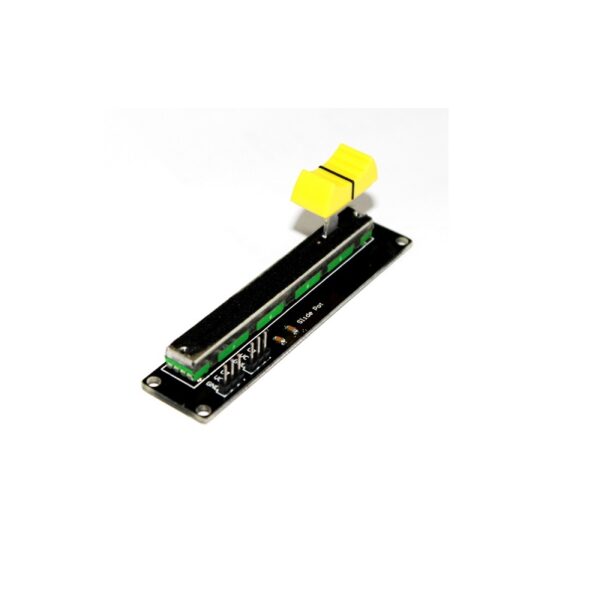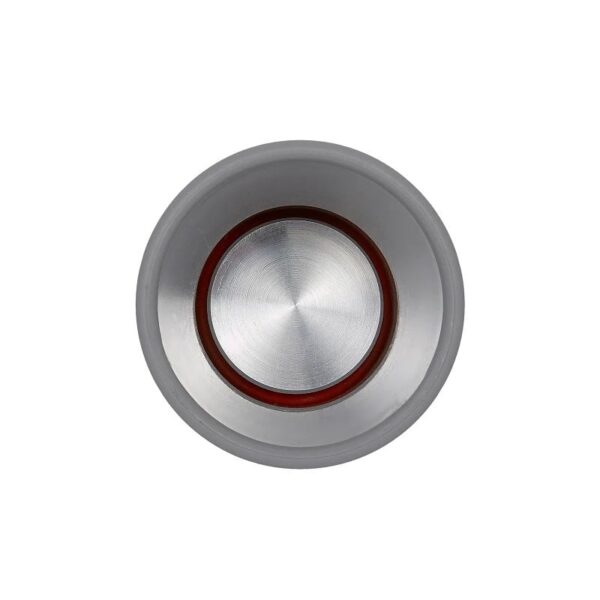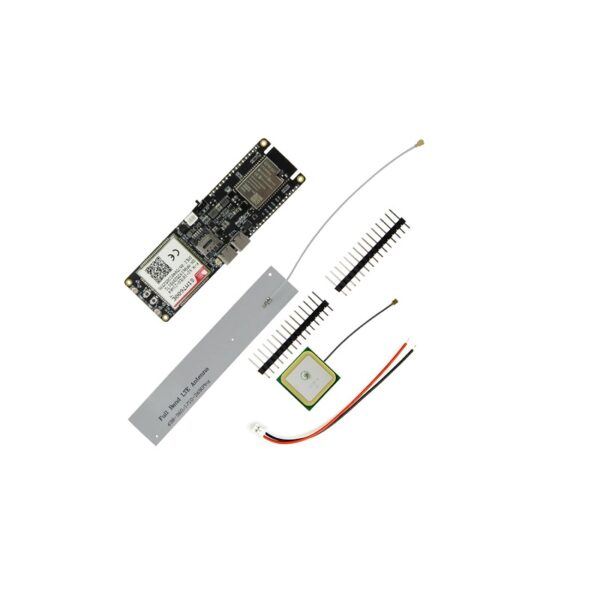-
 Fast Shipping
Fast ShippingGet the Priority Shipping on Prepaid Orders
Prepaid Orders
-
 Normal Shipping
Normal Shipping Get Normal Delivery (Surface) with Cash On Delivery
COD Orders


₹10,135.43 (Including tax)
Discount per Bulk Quantity
| Quantity | Discount | Price |
|---|---|---|
| 5 - 10 | 5% | ₹9,628.66 (Including tax) |
| 11 - 20 | 8% | ₹9,324.60 (Including tax) |
| 21 - 40 | 10% | ₹9,121.90 (Including tax) |
| 41 - 100 | 12% | ₹8,919.19 (Including tax) |
Out of stock
No worries! Enter your email, and we'll let you know as soon as it's back in stock.
Get the Priority Shipping on Prepaid Orders
Prepaid Orders
Get Normal Delivery (Surface) with Cash On Delivery
COD Orders
This is a TTGO SIM7600E-H Module ESP32- WROVER-B Chip WiFi Bluetooth 18560 Battery Holder Solar Charge Development Board. The module is used to transfer any data to another. The 7600E-H also has onboard GPS and a rechargeable battery. In order to facilitate the use of various application scenarios, two T-type-c interfaces are reserved on the development board, one is used to upload the program to the main control chip, and the other is the SIM7600E-H USB dongle industrial network card interface.
The module has a solar input to charge the battery but any voltage source between 4-8V can be used to keep the battery charged. It can be connected to a computer via a USB cable and configured as a wireless network card.
Data Download Link:
https://github.com/Xinyuan-LilyGO/LilyGO-T-SIM7600X
1 x TTGO SIM7600E-H Module ESP32- WROVER-B Chip WiFi Bluetooth 18560 Battery Holder Solar Charge Development Board Unsoldered
| Main chip |
ESP32 WROVER-B |
|---|---|
| Working Voltage |
Working Voltage |
| Working Current |
200mA |
| Solar input voltage range |
4.4-6v |
| USB |
TYPE-C 3.0 |
| Battery Holder |
18650 |
| Clock Frequency |
40MHz |
| USB to TTL |
CP2104 |
| Frequency |
2.4~2.5GHz |
| Transmit Power |
22dBm |
| Communication distance |
300m |
| Working Temperature Range (°C) |
40 to 85 |
| Length (mm) |
110 |
| Width (mm) |
40 |
| Height (mm) |
20 |
| Weight (gm) |
50 |
Only logged in customers who have purchased this product may leave a review.
Shipping and Delivery Policy
1. Shipping Process:
2. Shipping Charges:
3. Order Tracking:
4. Delivery Address:
5. Delivery Issues:
6. No Return Policy for Opened/Soldered Products:
7. Refund Policy:
Out of stock
Out of stock
Out of stock
Out of stock
| CPU |
Allwinner H3 ,Quad-core Cortex-A7 Up to 1.2GHz |
|---|---|
| DDR3 RAM |
256MB/512MB |
| Connectivity |
10/100M Ethernet |
| USB Host |
Type-A x 1 ,2.54 mm pin x 2 |
| Debug Serial Port/UART0 |
4Pin ,2.54 mm pitch pin header |
| MicroUSB |
OTG ,for power input |
| GPIO |
2.54mm pitch 36pin. It includes UART ,SPI ,I2C ,IO etc |
| PCB Dimension |
40 x 40 mm |
| Power |
DC 5V/2A |
| Working temperature |
-20℃ to 70℃ |
| OS Support |
FriendlyCore 16.04(based on UbuntuCore-16.04) FriendlyWrt 19.07.1(32-bit) Armbian DietPi Lakka Kali |
Out of stock
| CPU |
Rockchip RK3328 |
|---|---|
| Number of Cores |
Quad-Core Cortex-A53 |
| Frequency |
4 x Cortex-A53 Up to 1.3GHz |
| DDR4 RAM |
1GB |
| Network |
Internal 10/100/1000M Ethernet Port x 1 USB3.0 converted 10/100/1000M Ethernet Port x 1 |
| USB Host |
USB 2.0 Host x1: USB Type A |
| USB-C x1 |
Power input(5V/2A) and Slave |
| Debug Serial Port/UART0 |
3.3V TTL ,3-pin 2.54mm pitch connector Buttons User button x 1 |
| MicroSD Slot |
1 |
| LED |
3 |
| PCB Dimension |
55.6 x 52mm |
| Power |
DC 5V/2A |
| Working temperature |
0℃ to 80℃ |
| Os Supports |
FriendlyWrt 21.02.1 (64-bit) ,FriendlyCore Focal Lite (Base on Ubuntu 20.04) |
Out of stock
| Communication peripherals |
One 8-bit Serial Peripheral Interfaces (SPI) – Two I2C modules – One low-power UART |
|---|---|
| Analog peripherals |
12-bit SAR ADC w/ DMA support – High-speed comparator |
| Processor |
32-bit ARM Cortex-M0+ core |
| Memories |
32 KB flash ,4 KB SRAM |
| Clocks |
4 MHz and 32 kHz internal reference clock |
| Timers |
Two 2-channel Timer/PWM modules – Low-power Timer (LPT) – System tick timer |
Out of stock
Out of stock
No account yet?
Create an Account
Reviews
Clear filtersThere are no reviews yet.